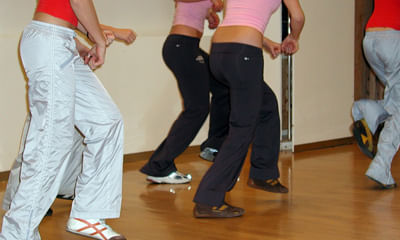All About Cerebral Palsy!
Cerebral Palsy: What You Need to Know
-
Injuries to the brain before, during or after birth can cause cerebral palsy.
- Symptoms of cerebral palsy are usually noticed in infants and toddlers.
- There is currently no cure for cerebral palsy, but treatment options are available to treat associated orthopaedic conditions.
- The functional abilities and intellect of a person with cerebral palsy can vary greatly.
What is cerebral palsy?
Cerebral palsy (CP) is a condition that is a result of a brain injury. This injury can occur before, during or shortly after birth. Cerebral palsy affects movement and muscle tone.
What are the symptoms of cerebral palsy?
Signs of CP are usually noticed during infancy or in toddlers. It can be associated with exaggerated reflexes, floppiness in the trunk or limbs, or stiffness in the trunk and limbs. It can present with involuntary movements and abnormal gait.
There is no cure for CP, but there are many treatment options to help with the orthopaedic problems associated with CP.
Common Orthopaedic Conditions Seen in Children with Cerebral Palsy
This is a deformity of the hip that can be found on one or both hips in children with an underlying neuromuscular condition, such as CP. Increased or decreased tone in the muscles can lead to migration of the femoral head out of the hip socket, requiring additional treatment.
Treatment:
- Proximal Femoral osteotomy:This surgical procedure can be used to correct hip subluxation or dislocation in children who have an underlying neuromuscular disorder. It is used to correct the position of the proximal femur for better coverage by the acetabulum, leading to better distribution of weight on the femur. A wedge of bone is typically removed to place the proximal femur into the hip joint. A plate and screws are used to secure the femur bone properly in place.
- Acetabular osteotomy: This surgical procedure can be used to provide better coverage of the femoral head by the acetabulum. A wedge of bone is cut and placed in a position to add coverage. Hardware is used to secure the bone in place.
Neuromuscular Scoliosis
Neuromuscular scoliosis is a condition of the spine associated with an underlying neuromuscular condition, such as cerebral palsy, muscular dystrophy or spinal cord injury. The underlying condition typically causes changes in the muscles, leaving them unable to support the spine adequately. This leads to a curvature of the spine. The typical presentation is an abnormal S- or C-shaped curvature. The spine can also have rotation creating a multidimensional curve. The curvature can be progressive, especially with growth spurts.
Treatment:
- Bracing: A back brace may assist in better positioning and supply better support, but it usually does not stop the progression of the curve. In children who are nonambulatory, modifications to the wheelchair can also assist in better spine support and sitting position.
- Spinal usion surgery: This is a common treatment option for neuromuscular scoliosis when the curvature of the spine interferes with function or becomes a high degree of curvature. The spinal fusion surgery fuses the spine with metal hardware to stabilize the curve and secure the spine.
Equinovarus Foot
This is a foot deformity commonly seen in children with CP. Due to muscle imbalance, the deformity can make weight-bearing activities challenging.
Treatment:
- Split anterior tibial tendon transfer: This surgical intervention releases and transfers tendons in the foot to correct the deformity.
- Calcaneal Osteotomy: This bony surgical procedure is used in patients who have more rigidity of the deformity in the hind foot.
Neuromuscular Flatfoot
This is a deformity of the foot due to an underlying neuromuscular condition. The abnormality of the muscles in the feet leads to a flat foot with minimal or no arch. This condition is commonly seen in children with hypotonia or low tone.
Treatment:
Orthotics: In children with flexible flatfoot, a brace or orthotic may be helpful to provide better arch support and decrease pain. In children with rigid or painful flatfoot, a surgery may be recommended to correct this deformity and improve the alignment of the foot.
Toe Walking
This is a condition in children with an underlying neuromuscular disorder that leads to high tone or muscle tightness in a child’s ankles, and can cause them to walk on the toes or balls of the feet.
Treatment:
- Physical therapy: Several sessions to work on stretching the tight muscles may be beneficial to decrease the amount of toe walking.
- Serial casting: Short leg casts can be applied for two-week intervals to progressively work on stretching the tight muscles to improve the position of the foot and ankle. The addition of Botox injections to help stretch the tight muscles in casts may be more effective in some children.
- Achilles tendon or gastrocnemius lengthening: When physical therapy and serial casting are ineffective in correcting the tight ankle, a surgery may be necessary to achieve a flat foot position with walking. A lengthening is a surgical procedure in which the tight Achilles tendon or gastrocnemius muscle is lengthened to allow greater range of motion and function of the foot and ankle. The lengthening also allows children to better tolerate ankle-foot orthosis and achieve a flat foot position with walking.
Limb Length Inequality
Limb length inequality is a difference in the lengths of a child’s lower extremities (legs). The difference in length can be found in children with hemiplegic CP.
Treatment:
The application of a shoe lift inside a child’s shoe on the shorter side assists in lessening the discrepancy. Surgical treatment to shorten the longer leg is also a way to decrease the discrepancy in children with a greater than 2-centimeter discrepancy. The procedure is called epiphysiodesis, and it is a carefully calculated surgery to close the growth plate in the longer leg and allow the shorter leg to continue to grow and balance out the discrepancy.
Torsional Disorders
Some children with CP develop an inward or outward twist in their lower extremities. When this is excessive, it can interfere with their gait pattern.
Treatment:
Tibial or femoral rotational osteotomy: This surgical procedure is used to correct deformity of the tibia or femur bone. The bone is cut, placed in a corrected position and secured with hardware. The deformities can be surgically corrected with different techniques to provide improved function, especially with gait.
Muscle Contracture
In a child with an underlying neuromuscular disorder, muscle tone can be increased, which can lead to a contracture of the muscle. This means the muscle does not stretch well. Common muscles involved are the hamstrings, adductors, hip flexors and gastrocnemii.
Treatment:
- Physical therapy and bracing: Physical therapy and bracing techniques can help keep muscles stretched to improve range of motion and assist in preventing a muscle contracture.
- Botox: An injection of this is used to temporarily weaken the muscle to allow for stretching of the muscle. The effects of Botox typically last about three months and then wear off. During this time, it is important to aggressively stretch the affected muscle to optimize the medication. Physical therapy and serial casting are commonly used in conjunction with Botox treatment.
- Tendon lengthening surgery: When stretching and bracing are not effective in improving range of motion, tendon lengthening surgery can be used to provide additional stretch and function at various muscle sites. Common muscles lengthened include hamstrings, gastrocnemii and adductors.



+1.svg)
